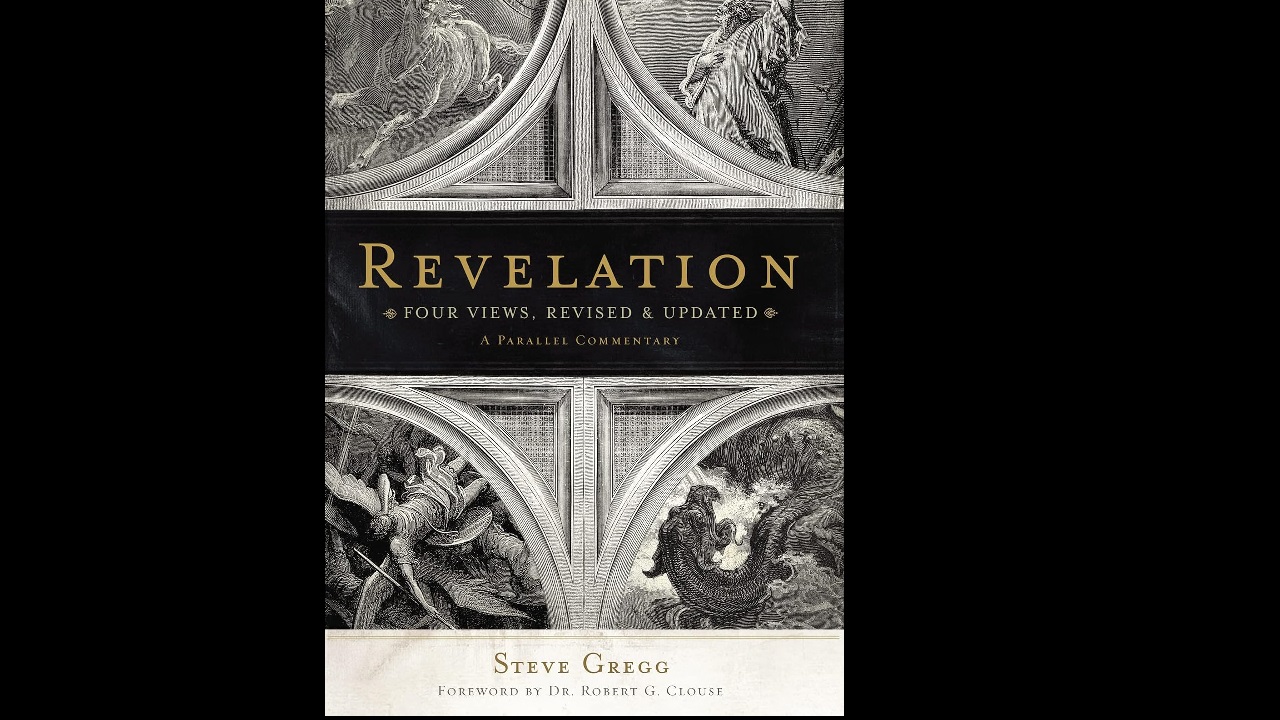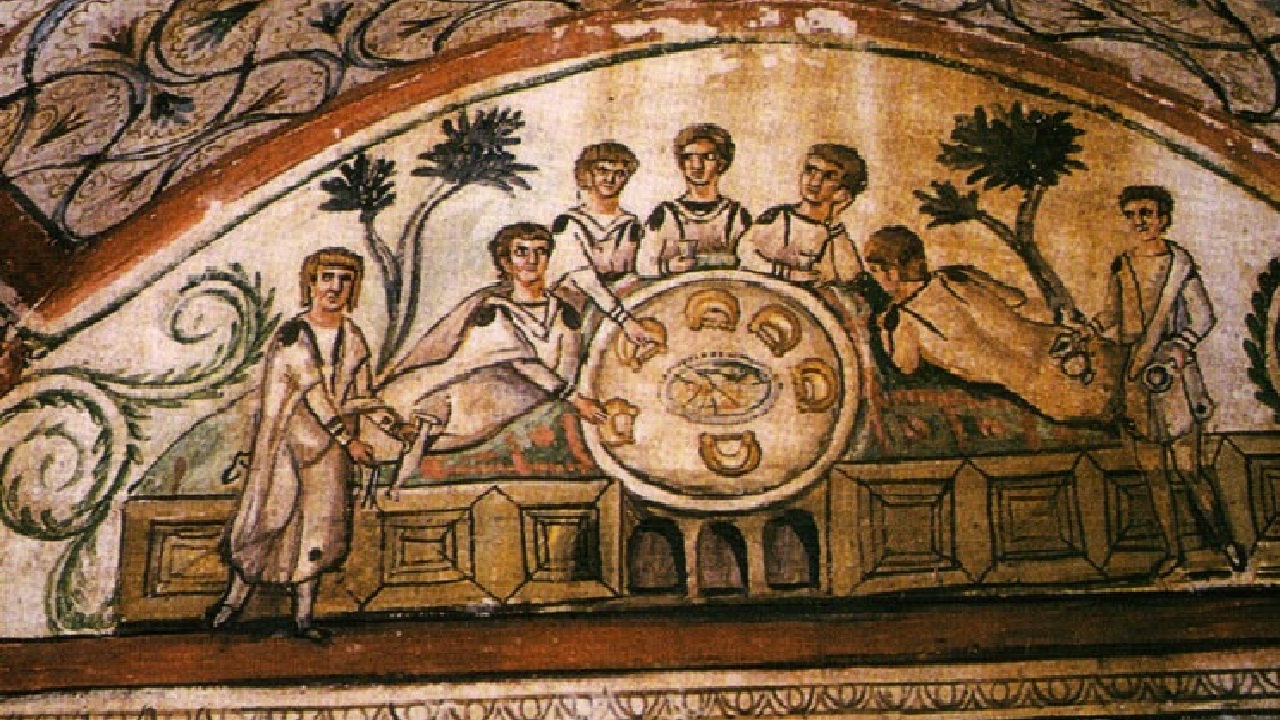From: Revelation: Four Views, A Parallel Commentary, Revised & Updated Edition Paperback – July 2, 2013 by Steve Gregg (Editor), Robert G. Clouse (Foreword)
HISTORY OF INTERPRETATION
The Early Church
Full-length commentaries on Revelation from the first three centuries of the church have not survived for us to examine, with the exception of that of Victorinus of Pettau (d. 303), which seems to have come down to us in a form altered from its original state. Of this, Swete writes:
Of the commentary of Victorinus in general it is impossible to speak with confidence until it is before us in a form nearer to that in which it came from his pen. But the extract published by Haussleiter from what appears to be the original work confirms the statement that Victorinus held firmly by the chiliastic [premillennial] interpretation of Apoc. xx.
We know that Melito of Sardis (170), Irenaeus (180), and Hippolytus of Rome (220) all wrote complete commentaries on Revelation, but none of these have survived to the present. There are fragments of exposition on Revelation to be found in Justin Martyr (d. 165), Melito, Irenaeus, and other early fathers. In his writings, Tertullian (d. 220) quoted from eighteen of the twenty-two chapters. From these, we can know what these men believed about a number of the subjects in Revelation, and can extrapolate from them what their general view of the book must have been.
Views of Ante-Nicene Western Fathers
Papias (c. 130), bishop of Phrygian Hierapolis, interpreted the Millennium as a future golden age on earth, and “embellished his description of it with features drawn from Jewish sources.” His millennial (in those days, called chiliastic) ideas were followed, in the main, by Justin, Irenaeus and Tertullian, and Lactantius (d. 320). It is on this basis that premillennialists today often claim that the early church was uniformly premillennial. This conclusion, however, is not wholly trustworthy in light of the evidence.
We do not have access to very much that was written in the first four centuries of the church, and a large variety of interpretations may have been held for which no documentation has survived. Justin Martyr (a premillennialist), writing on this very subject, left clear testimony to the presence in his day of alternative viewpoints in the church. In his Dialogue With Trypho, Justin wrote:
I and many others are of this opinion [premillennialism], and [believe] that such will take place, as you assuredly are aware; but on the other hand, I signified to you that many who belong to the pure and pious faith, and are true Christians, think otherwise.
It seems clear that there were “many” whom Justin regarded as “true Christians” and “who belong to the pure and pious faith” who did not hold to his brand of premillennialism—or possibly not to premillennialism at all. That he did not regard them as heretics serves to illustrate that the early church would not have agreed with dispensationalist John F. Walvoord’s assessment that premillennialism is of comparable importance to the doctrines of verbal inspiration, the deity of Christ, substitutionary atonement, and bodily resurrection. The evidence suggests that the development of eschatological systems was not a chief priority among the earliest Christians. Thus, many of the principal fathers neglected to say enough about their views on this subject to enable us to determine their exact sentiments. We are certainly at liberty to question the validity of sweeping statements of dispensationalists like Charles C. Ryrie, when he asserts that “Premillennialism is the historic faith of the Church.” A more accurate statement of the case would be that the eschatological fragments of the relatively few writers whose works we can examine bear witness to the premillennial convictions of those particular writers.
In addition to his expectation of a thousand-year terrestrial kingdom and a restored Jerusalem (based on Revelation 21), Irenaeus identified the first beast of Revelation with Paul’s man of sin and considered a possible identification of 666 with the word Lateinos (meaning, “Roman”), suggesting Rome. Based upon 17:12, he believed that the empire would be divided into ten kingdoms and Rome reduced to ashes.
In his tract, On Christ and Antichrist, Hippolytus identified the two witnesses of chapter 11 as Enoch and Elijah. The pregnant woman of chapter 12 was seen as the church, and the whore Babylon as Rome. He saw the first beast as the Roman Empire, to be wounded to death but restored under Antichrist. The second beast was seen as ten kingdoms that will replace the empire.
In Rome, Tertullian understood the book similarly. To him, Babylon is Rome; the two beasts are the Antichrist and the false prophet who wage war with the church. There will be a bodily resurrection, followed by a kingdom of a heavenly order but having its seat on earth.⁴²
Thus the western fathers of the Ante-Nicene church whose works have survived took a quasi-literal and eschatological approach to the Book of Revelation. They lived, of course, too early in history for them to take a historicist approach, such as that which later arose and which spread the fulfillments of the prophecies over the space of over 1,800 years. Events, which later historicists would view as ancient history, were, in those days, present and future realities. This means that the fathers would have spoken futuristically, even if they were identifying the prophetic events with the same phenomena that historicists, and some preterists, now associate with past fulfillments.
The Alexandrian Fathers
The Alexandrian fathers rejected chiliastic views (Millennialism). These fathers introduced an allegorical approach to Revelation. Origen (c. 185–254) repudiated the literal interpretation of the chiliasts as “Jewish.”
Prior to Origen, Clement of Alexandria (c. 150–215) interpreted the twenty-four elders as a symbol of the equality of Jew and Gentile in the church; locusts’ tails as the mischievous influence of immoral teachers; and the many-colored foundation stones of the New Jerusalem as the manifold grace of apostolic teaching.⁴³
Origen interpreted the seven-sealed roll as Scripture, to which Christ alone has the key; the white horse rider, he believed, represents the opening of heaven by the Divine Word through the white light of knowledge which he imparts to believers.⁴⁴
Methodius followed the Alexandrian approach as well. In his exposition, the male-child of 12:5 represents the baptized soul in which Christ is born; the dragon’s seven heads are the seven greater sins; his ten horns are intended to contrast with the ten commandments; the beast is a symbol of fleshly lust.⁴⁵
This allegorizing method of interpretation, which did away with the expectation of specific historical fulfillments, eventually displaced the eschatological approach, though both are found together in the commentary of Victorinus in 303. Victorinus’ commentary followed the allegorizing approach. It appears that Augustinian editors may have altered it, however, because in its present form it champions amillennialism, whereas Jerome (c. 345–420) listed Victorinus, along with Tertullian and Lactantius, as a chiliast (that is, a premillennialist).
Tyconius (c. 390), a Donatist, also followed the allegorizing method, though he did not rule out altogether the possibility of historical fulfillments. He applied the Millennium to the interval between the first and second advents of Christ. “His interpretation was taken over by Jerome and Augustine and became normative in the church for the next eight centuries.”⁴⁶
Augustine (c. 354–430), in The City of God, interpreted Revelation 20 in the same manner as did Tyconius. The same general allegorizing method was followed in the commentaries of Primasius (c. 550), Alcuin (c. 735–c. 800), Rabanus Maurus (c. 775–c. 836) and Walafrid Strabo (c. 807–c. 849). Swete summarizes:
Primasius, Cassiodorius, Aprungius, Bede, Beatus, and most of the writers on the Apocalypse who followed them in the earlier centuries of the Middle Ages, were content with a mystical exegesis which varied in its details according to the fancy of the individual expositor or the needs or ideas of his time.⁴⁷
During this general period, two commentators stand out as exceptions to the trend of Tyconius:
Andreas of Cappadocia (early sixth century) produced the greatest of the Greek commentaries. Swete regards him as “perhaps the best known of ancient expositors of the Apocalypse, and certainly none of them is more edifying or, in his own way, more attractive.”⁴⁸ This work blends the methods of Irenaeus, Origen, and Tyconius and makes its own contribution in suggesting some historical fulfillments alongside mystical interpretations. Andreas saw Babylon as the world opposing the church in general, but more specifically identifies the seven kings (17:10) as seven embodiments of the world power, the sixth being Rome and the seventh Constantinople. He remains, with Tyconius and Augustine, amillennial.
42. Swete., ccix.
43. Ibid., ccviii.
44. Ibid.
45. Ibid., ccix.
46. Bruce, “Revelation” in IBC, 1594.
47. Swete, The Apocalypse of St. John, ccx.
48. Ibid., ccxi.




